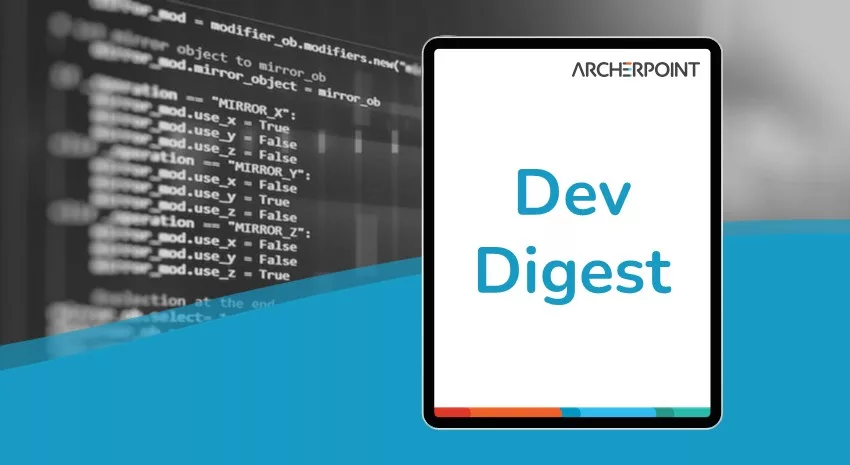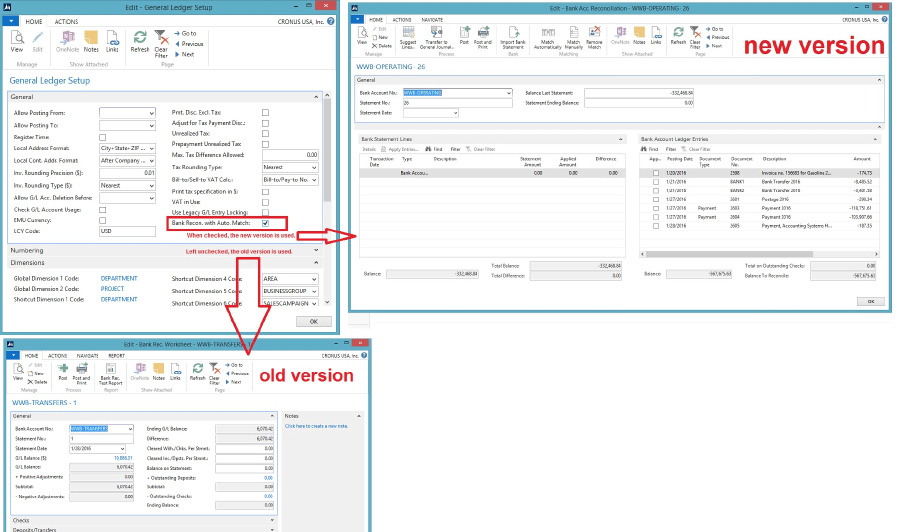ArcherPoint Dynamics NAV Developer Digest - vol 71

As they run into issues and questions, find the answers, and make new discoveries, they post them companywide on Yammer for everyone’s benefit. We in Marketing watch these interactions and never cease to be amazed by the creativity, dedication, and brainpower we’re so fortunate to have in this group—so we thought, wouldn’t it be great to share them with the rest of the Microsoft Dynamics NAV Community? So, the ArcherPoint Microsoft Dynamics NAV Developer Digest was born. Each week, we present a collection of thoughts and findings from the ArcherPoint staff. We hope these insights will benefit you, too.
Faithie Robertson on Bank Reconciliation in Dynamics NAV 2015:
Be aware that there are TWO VERSIONS of Bank Reconciliation possible in 2015. For the full scoop, read the article linked below. But for the short version – which type of reconciliation you do is determined by the “Bank Recon. With Auto. Match” field on the General Ledger Setup page. (If you don’t see the field, you will need to have it added to the page.)
If the field is checked, you get the new version of reconciliations, which uses page 379. If not, you will use the old “Bank Reconciliation Worksheet” page 10120. (See the attachment below for the difference.)
Figure1 – Which version of Bank Reconciliation is determined by which type of reconciliation you do is determined by the “Bank Recon. With Auto. Match” field on the General Ledger Setup page
One important note in the link below is this:
“Note: For new installations of Dynamics NAV 2015, the Bank Recon. With Auto Match check box will be selected by default. For upgraded installations, the check box is not selected, meaning that the existing North American feature is used.
Note: When upgrading and changing to the Bank Recon. with Auto Match feature, the history created with NA Bank Rec. feature is stored and made available from the navigation pane.
The Bank Acc. Reconciliations page is the same for both features. If the Bank Recon. with Auto. Match check box is selected, the Bank Acc. Reconciliation page (379) opens when the users chooses New in the Bank Acc. Reconciliations page. If the check box is not selected, the Bank Rec. Worksheet page (10120) open.“
Read the entire article: Improvements to Bank Reconciliation in the North American Versions.
Jon Long on system performance:
Story of Performance – The Upgrade Team has recently encountered a 450GB db involved in an upgrade. The total runtime was over 7 days, with 2 processes running 72 and 76 hours and the conversion to 2013 alone taking 4 full days. They had a powerful server, but, with only 16GB of RAM and large 7200RPM hard Drives, the intense data processing of an upgrade brought it to its knees.
Solution: We had them purchase faster drives and add 256GB of RAM. Now, the 4 day 2013 conversion is 20 hours and the 76 hour process takes 13.
Hardware is the low hanging fruit when talking performance. If hardware doesn’t improve performance, then you have bigger problems.
Money well spent. Case closed.
Kyle Hardin on searching drives using the Command window:
Trivial tip of the day: In a CMD window, the Find command searches the contents of text files for a given string. Supposedly, the Windows Explorer Search capability will also do this, but I seem to always get spotty success with that. So I searched for an alternative – a CMD equivalent of the grep command.
Anyway, I had a pile of 1000 teeny CSV files that had been imported previously and needed to find one particular invoice inside those files, and I needed to know the file name.
This did the trick:
find “DISB-xxxx” *.csv
If you are interested in NAV development, check out our collection of NAV Development Blogs.
For step-by-step instructions on how to perform specific tasks in Microsoft Dynamics NAV, see our collection of How-To blogs.
If you found this post useful, you might also be interested to read through our archive of the Dynamics NAV Developer Digest.

